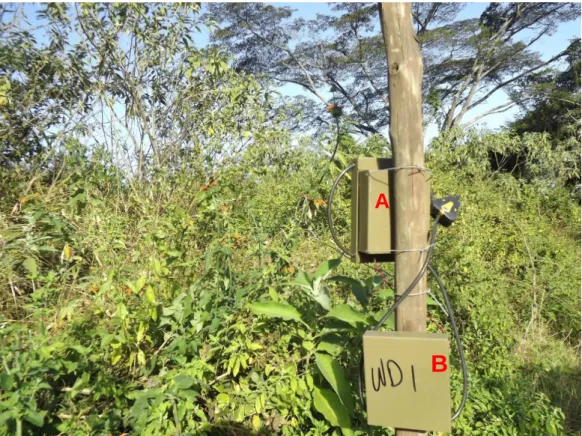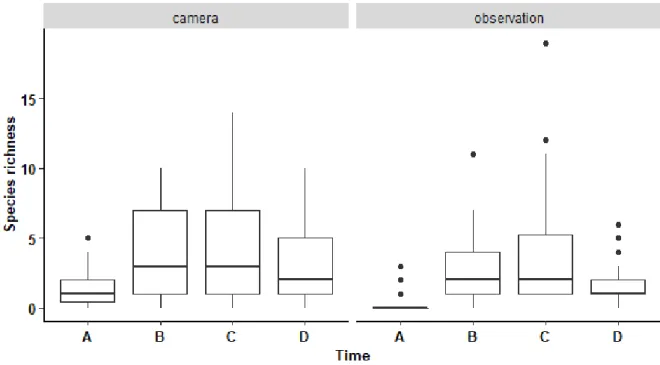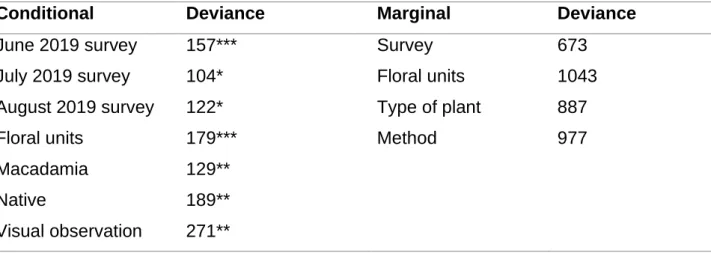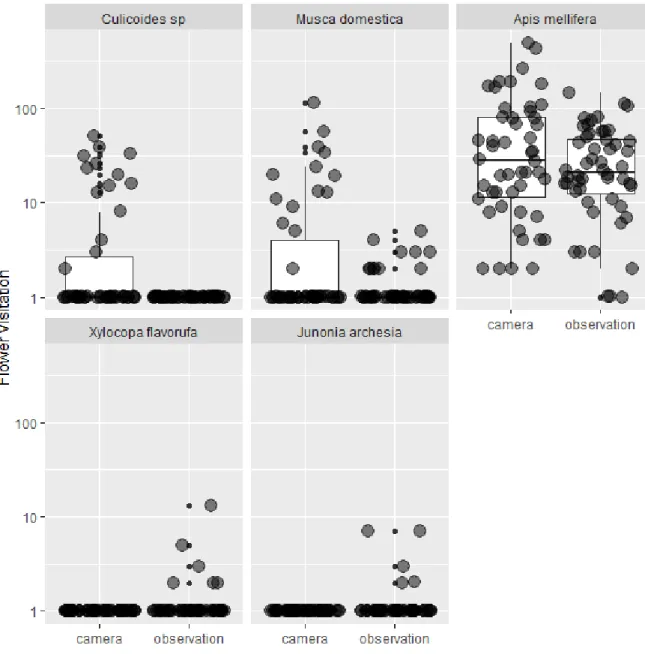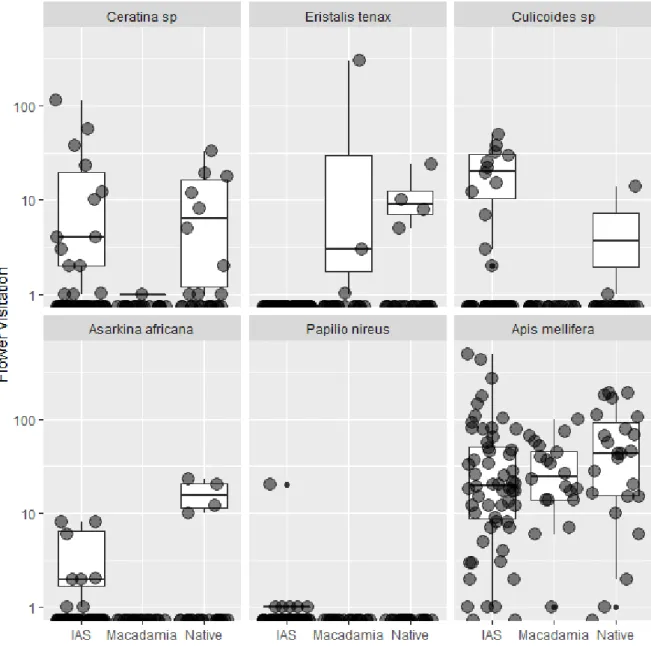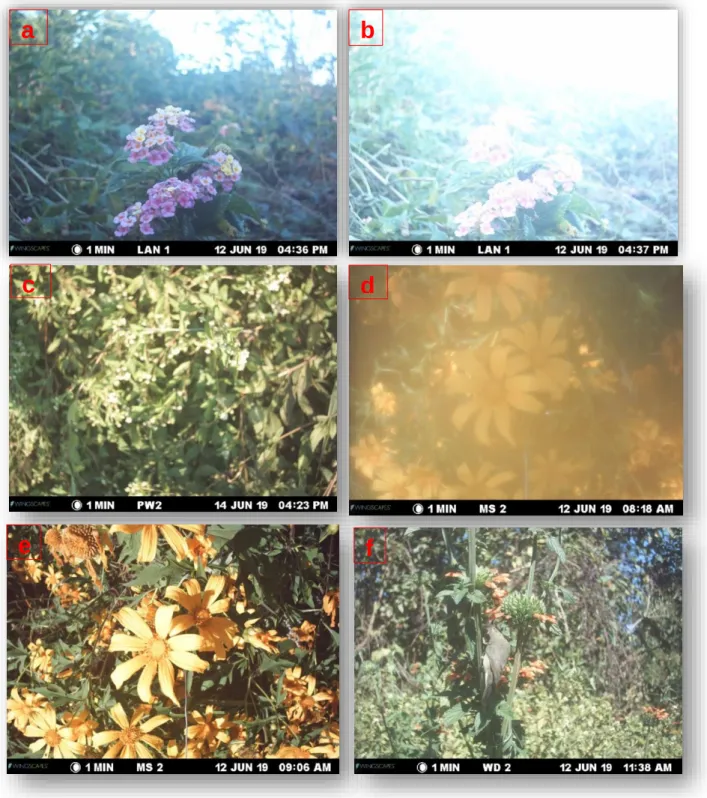However, there is a global decline in pollination services caused by invasive alien plants (IAPs), overuse of pesticides, habitat loss and fragmentation. IAPs and native plants were visited by a larger and more diverse group of flower visitors than macadamia, although the density of macadamia flowers was twice as high and covered a much larger area. Native plants were more specialized in the floral visitors they attract with GLMM suggesting, although not significantly, that they were associated with greater species richness.
More Apis mellifera visits were on IAPs and native plants contrasting with macadamia by less than 10%. The removal of IAPs around mass flowering native plants such as Gymnanthemum myrianthum should support and facilitate the second most common floral visitor of macadamia, E. I also want to send my sincere thanks to Dr. Laurens Swanepoel for the help that I have provided in the field. me with the camera traps for my fieldwork, your help is much appreciated.
I would like to give a special thank you to Ramotjiki's family, especially my mother and younger sisters Dineo and Mahlodi, for never giving up on me and putting all the trust in me for getting this far with my varsity education, as I being the first in the family to graduate from university, it is truly a privilege to grow under your wing. Number of samples indicates how often the plant was sampled during 2 years ……….64-65 Appendix B: Species list of flower visitors and the number of observations per method.
General introduction
Habitat fragmentation is a process of dividing large habitats into smaller pieces (Andren 1994; Fahrig 2003) leading to the destruction and degradation of natural ecosystems (Haddad et al. 2015). This results in the reduction and isolation of tracts (Andren 1994) that have a negative effect on species richness and abundance, resulting in loss of landscape-scale biodiversity (Fahrig 2003). Habitat fragmentation is one of the most common threats to pollinators affecting their ecological interactions in the ecosystem (Rathcke and Jules 1993; Steffan-Dewenter et al. 2006). Habitat fragmentation may also be positive for species richness and abundance with respect to the number and size of patches (Fletcher Jr et al. 2018).
Bees are frequently studied pollinators that provide ecosystem services to many crops worldwide (Rader et al. 2020). There is a recent study that showed that other non-bees visit agricultural crops (Rader et al. 2020). Among these insects, the most common are Lepidoptera, Hymenoptera: wasps, Coleoptera (Rader et al. 2020) and Diptera (Howlett et al.
Diptera are believed to be less effective pollinators of macadamia crops than other agricultural crops (Howlett et al. 2015). The study was conducted in the Luvuvhu area, which is the second largest macadamia nut producer in South Africa (Weier et al. 2019).
Two ways of observing: camera traps versus visual observation of
Although visual observation is a commonly used method in the field, this method comes with a limitation to more mobile small insects (Darras et al. 2019). Data in camera traps is captured in the form of images that record a group of individual species or different species and can help quantify species richness (diversity) and relative abundance (Rovero et al. 2013; Caravaggi et ai. 2017). The processing of camera trap data is very time consuming due to thousands of photos captured in one sampling period (Villa et al. 2017).
This can result in interaction between the plants by supporting the pollinator of the other species or it can result in competition (Hansen et al. 2018). Generalist pollinators form the backbone of the pollinator networks and slow the extinction of the specialized species when webs are disrupted (Fontaine et al. 2008). The specialized pollinators are more vulnerable to the effects than the generalists (Ashworth et al. 2004; Fontaine et al. 2008).
A slight decrease in the abundance or loss of pollinator species from a specialized narrow group of pollinators (Ashworth et al. 2004). However, IAPs can be beneficial by mitigating nectar and pollen declines due to environmental change and reducing the dependence of native bees on native plants (Potts et al. 2010). IAPs can facilitate pollination of native plants by attracting more floral visitors to the area where they coexist (Hansen et al. 2018).
Each time an insect visited a flower of the focal plant, it was recorded as a single flower visit event (Nel et al. 2017). To estimate species abundance of flower visitors, we fitted multivariate generalized linear models (GLMs) using the mvabun package (Wang et al. 2012) with. Unlike visual observation, the camera trap does not affect the insects' foraging behavior (Caravaggi et al. 2017), and thus significantly more Musca domestica were detected with the camera trap.
The use of camera traps in our study had limitations similar to those of the study by Villa et al. 2007) such as images showing incomplete species and species captured far from the focal point. IAPs have the ability to modify the behavior of native plant flower visitors (Morgles et al. 2017) resulting in more visits. Flowering plants within gardens can influence the abundance of flower visitors (Howlett et al. 2015).
The crop is also visited by beetles and flies, although their effectiveness as pollinators has not been tested (Howlett et al. 2018). The number of flower visitors visiting macadamia varies within orchards and between seasons (Howlett et al. 2015).
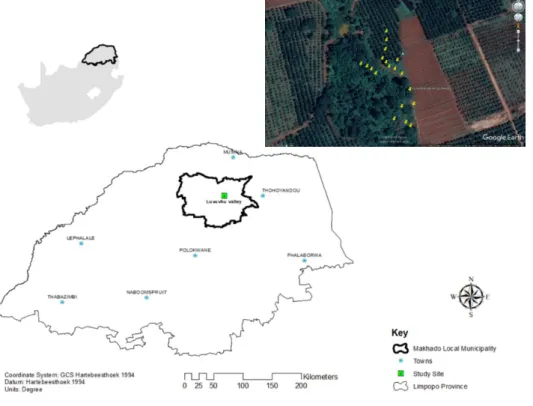
Flower visitor communities in heavily managed and transformed
This interaction between organisms can indicate ecosystem strength, structure and function (Bartomeus et al. 2008; Hansen et al. 2018). Impacts also vary between plants and between seasons, places and time (Ojija et al. 2019). It appears that there is a main plant and pollinator, and other plants and pollinators depend on them (Bartomeus et al. 2008).
Macadamia is capable of self-fertilization with the latest study describing 90% of pollination through cross-pollination (Langdon et al. 2019). Macadamia nut set is affected by bee visitation, nut set decreases with high bee visitation (Grass et al. 2018). The surrounding landscape of orchards also affects the pollination service of macadamia (Howlett et al.
Its introduction into the non-native site can cause a decrease in native flower visitors and pollination success (Carmo et al. 2004). Since honey bees are found in large numbers in a region; their abundance can result in competition for floral resources (Nielsen et al. 2017). They can visit many flowers and reduce interactions between other flower visitors and plants (Goulson and Sparrow 2009; Santos et al. 2012).
The data collected was used to build flower visitor networks using the Bipartite package (Dormann et al. 2008). Compartments Compartments are subsets of the web that are not connected (via a higher or lower trophic level) to any other compartment (Dorman et al. 2020). A network consisting of many species (high richness) produces fewer links than networks with few species (Chacoff et al. 2012).
Nested network shows that there are core generalist plants and pollinators and there is a dependence on other plants and flower visitors on them (Bartomeus et al. 2008). Most IAPs are generalized and attract a variety of floral visitors due to their high floral resources, and thus may compete for floral visitors with the native (Grass et al. 2013). Honeybees are considered a generalist flower visitor (Santos et al.. 2012, Grass et al. 2013) and generalist flower visitors are likely to visit more of the IAPs than specialist or rare flower visitors (Hansen et al. 2018).
Although IAPs have undesirable impacts in the ecosystem, they may share floral visitors with the native plants and crop plants, and their removal from the system may result in species loss (Carvalheiro et al. 2008). They are one of the most important groups of pollinators, second only to the Hymenoptera (Ssymank et al. 2008).
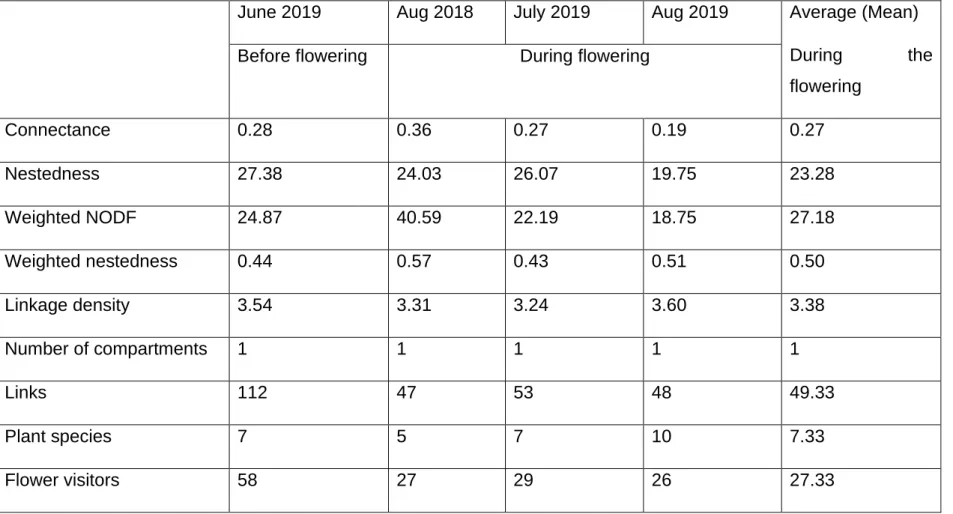
Thesis synthesis
Dipteras are associated with both visitation and pollination of various crops (Rader et al. 2020), although they are not considered potential pollinators of macadamia crops (Howlett et al. 2015). visits to macadamia and Rader et al. 2020) found that this insect is associated with both visitation and pollination of crops. This study showed that, while not plant-specific, the IAPs played an important role in supporting visitors to macadamia flowers, Apis mellifera, outside of the flowering period (87%). Network analysis data can be used to guide the eradication of the exotic plants from the system (Howlett et al 2015).
The IAPs have been shown to compete with native plants for flower visitors before the flowering period. However, these plants play an important role in supporting the flower visitor of macadamia outside of flowering season although they have also been associated with competition with the native plants. It will be particularly interesting to know how they will differ with regard to flower visitors.
Furthermore, for flower visitor networks, not much comparison could be made regarding the impacts of IAPs on structure (connectivity, link density and nesting) when compared to the network without IAPs. Images obtained from camera traps cannot provide a clear representation of species abundance as the same insect may be captured more than once. However, the maximum number of insects per frame (image) can be used to extract abundance.
The recording time can be reduced to 30 seconds, although this will result in larger data sets to process. This study also identifies native plants associated with more generalized visits, reflecting the importance that remaining natural vegetation plays in supporting flower visitors. More visits to the IAPs will lead to the spread of the plants in the system, resulting in a greater impact on the local and more diverse pollinator assemblages of the native flowers.
The research knowledge we already have about the importance of diverse insect assemblages is probably not a bad idea for the ecosystem to start removing IAPs around mass-flowering native plants like Gymnanthemum myrianthum in order to preserve native pollinators. The removal of these plants must be accompanied by the planting of more native plants on the remains. Potential management of the drone fly (Eristalis tenax) as a crop pollinator in New Zealand.
